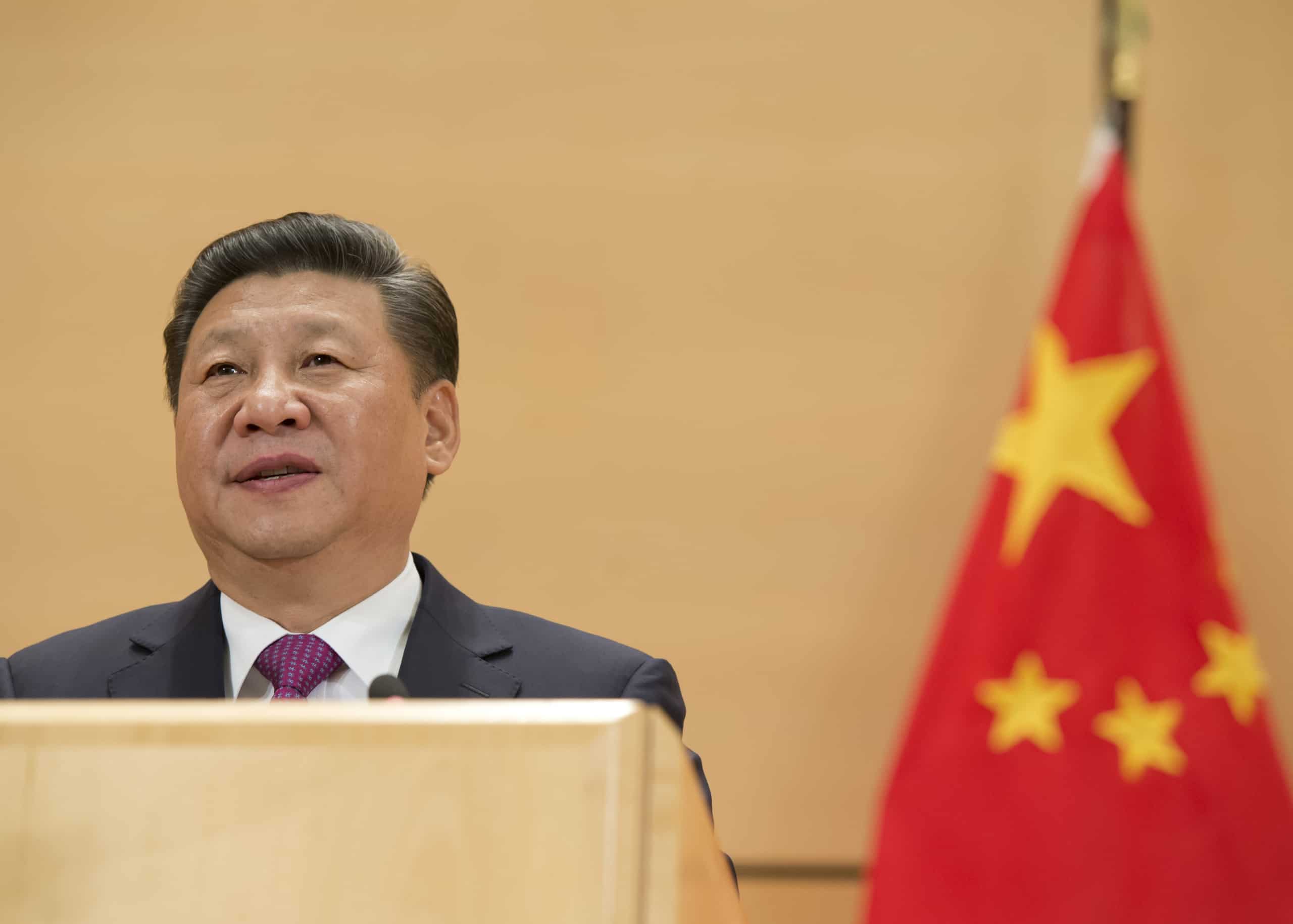
What exactly is Xi Jinping doing?
This question is top of mind for nearly all foreign investors, companies, government officials, and analysts who have been watching — with a mixture of concern and fascination — the blitzkrieg of regulatory measures Beijing unleashed beginning this summer. What started with a data security investigation of the ride-hailing app Didi Chuxing has expanded into video games, education, fintech, food delivery, crypto currency, and most recently, real estate. As if this wasn’t enough, Xi unveiled a new slogan — “common prosperity” — that portended further government actions to blunt the country’s growing levels of income inequality and other social maladies that are the byproduct of decades of rampant economic growth.
It will take time before a clear perspective on Xi’s end game emerges, given that the regulatory campaign is ongoing. But there is a related puzzle that can be addressed immediately: why is all of this happening now?
As many commentators have been quick to point out, there is a sound regulatory logic behind nearly all of the recent measures. From concerns over data security and consumer privacy, to a clear frustration with the growing monopoly power of giant tech firms, Beijing is moving to address many of the same underlying challenges that face regulators in other advanced economies. Whereas lawmakers in the EU and the U.S. are indecisive and constrained by complex legal constraints and business lobbying, Beijing is moving at a ferocious velocity.
But the existence of regulatory gaps in these sectors has been known for years. Similarly, to the extent that Xi’s “common prosperity” campaign is focused on reducing income inequality, it must be noted that China’s high inequality is hardly a new phenomenon. Indeed, recent data shows that inequality peaked around 2008, and has since leveled-off and even declined slightly. Some have posited that Xi’s sense of urgency was provoked by the recent census data, which reported that China’s population was growing at the slowest pace in decades. But again, Beijing has long known that its demographic future is bleak.
So what explains the timing of the new campaign? The most satisfying answer for “why now?” is China’s political calendar, specifically the 20th Party Congress scheduled for the fall of 2022.
It is customary to see a Party Congress or important Plenums (full convenings of the CCP Central Committee) as a crucial milestone or turning point in Chinese policy. Throughout PRC history, these high-level meetings have indeed been important milestones, anchoring major strategic decisions and large swings in policy. Most famously, China marked the beginning of its shift away from central planning and towards market reforms at the 3rd Plenum of the 11th Party Congress, held in December 1978. And the coming 20th Party Congress is bound to be an important historical marker, because Xi Jinping will almost certainly claim a third term as General Secretary of the Party, having himself anointed as something close to “leader for life.”
Yet why would a far-off Party Congress induce this flurry of policy activity more than a year in advance? After all, if Xi Jinping already has a lock on the leadership position, why would he need to launch this sudden, multi-stranded political and policy campaign? More generally, scholars who have studied past Congresses generally agree that nothing is ever actually decided at the Congress itself. Instead, Congresses simply ratify and officially stamp decisions made mostly behind closed doors in the period before the Congress. This simple insight provides a clue to what is happening right now.
In fact, the convening of a Party Congress is the culmination of an approximately year-long bureaucratic, political, personnel, and policy process. The whole pyramidal personnel system turns over from the bottom up, as new leaders are appointed to the townships and counties (at the beginning of the year), then to the provinces and ministries, and finally to the top central leadership. The crucial issues and personnel choices are negotiated jointly during the 12-month run-up to a Congress or Plenum, and are then promulgated to the public at the meeting itself. While nothing gets decided at a Congress, the outcome of this process is revealed at the Congress.
The period leading up to a Congress includes, simultaneously, the selection of new officeholders and the drawing-up of the Party’s program for the next five years. In order to get on top of this process, savvy leaders regularly push for a reset of the Party’s propaganda and policy line about a year before the Party Congress. Doing so allows them to get a leg up in the personnel struggle: a strong policy guideline gives the leader an advantage in getting his supporters promoted. He can impose what are essentially loyalty tests on officials from the bottom to the top: Are you with the new program or not? The train is leaving the station and you need to be on board. The incumbent then enters a Party Congress in the strongest possible position with a new coterie of supporters and a new political line that suits him.
This dynamic has been evident repeatedly in CCP history. The clearest example was Deng Xiaoping’s famed “Southern Tour,” in 1991–1992, in which he revitalized the economic reform movement after three years of stagnation after the Tiananmen Square crackdown. While Deng, then 87, certainly had his eye on solidifying the reform agenda before he “went to see Marx,” his near-term goal was setting the stage for the 14th Party Congress at the end of 1992. In fact, the framework of “socialist market economy” was first announced at that Congress, and a batch of pro-economic reform leaders were promoted at the national and provincial level. Less positively, Deng booted reformer Hu Yaobang out of his position as General Secretary in January 1987 — exactly ten months before the 13th Party Congress — instead of waiting for a resignation at the Congress itself. More recently, Xi’s path to the 19th Party Congress in 2017 was first cut 12 months earlier at the 6th Plenum, where he assumed the title of “core” of the current leadership group, a symbolic yet substantive step to consolidate power ahead of the following year’s Congress.
With this history as background, the bureaucratic and political logic of Xi’s current campaign to rectify certain sectors of the economy under the rubric of “common prosperity” can be glimpsed. By outlining an ambitious — yet somewhat murky — overall goal, Xi has given cadres a benchmark to demonstrate loyalty and competence in the lead-up to the 20th Party Congress. Taking initiative and correctly interpreting Xi’s vision over the next several months helps position officials for promotion. At the same time, this gives Xi a powerful tool to build policy momentum that he can channel straight into the Party Congress, thus proactively shaping the dominant policy direction between 2022 and 2027.
Some might object to this supposition on the grounds that Xi is already so powerful that he can dispense with the normal political playbook. But that somewhat misses the point: it’s not that Xi Jinping is up for election next year, it’s that everybody else is. Furthermore, next year’s Party Congress is no ordinary meeting of the Central Committee. Xi Jinping is pushing for something unprecedented: a third term as leader of the CCP and his anointment as the most powerful Party leader since Mao Zedong, one with possible lifetime tenure. While it’s true that Xi already occupies a singular and dominant position in the Party-state hierarchy, it’s also true that the stakes for Xi next year are very high. Even if he feels confident that he will achieve a “reelection,” he will nonetheless want to build and shape a public justification of historic proportions for his continued anointment to power. In this, Xi appears to be borrowing from basic Maoist strategy: Avoid combat and preserve your strength, until you are ready to go on the offensive, at which point, fight a battle of annihilation.
The cacophony of actions is a feature, not a bug, of Xi’s 20th Party Congress strategy… By grabbing the policy and regulatory reins so tightly and decisively, Xi is signaling who’s in charge.
From this perspective, the ongoing regulatory campaign in Beijing is what we should expect: Xi is on schedule. He must make sure that this fall he rolls out an ambitious agenda, a program and propaganda offensive that is sufficient to justify his continued domination in the lead-up to the Party Congress.
The implications of these dynamics are significant. First, those waiting for the current political and regulatory drumbeat to die down will be disappointed. The cacophony of actions is a feature, not a bug, of Xi’s 20th Party Congress strategy. Power is also performative. It needs to be occasionally wielded to be respected. By grabbing the policy and regulatory reins so tightly and decisively, Xi is signaling who’s in charge. Indeed, we should expect an uptick of political and ideological campaigning between now and November’s 6th Plenum, which marks the formal start of the Party Congress planning process. There is justified speculation that Xi will announce a new “resolution on Party history” at the meeting, marking only the third such time the Party has done this since 1945.
Second, we’ve clearly entered a new phase of Xi’s leadership, one where he takes a much more active day-to-day role in the content, direction, and scope of policy. Growing tensions with the U.S. are an undoubted driver of Xi’s growing involvement, with too much at stake for Beijing now to “outsource” policy to the formal bureaucracy. Functionally, this means that the evolving state-driven economic model of “grand steerage” is here to stay. Xi is now confident that the Party has the resources, instruments, and experience to steer the overall economy. He further believes that the resistance that entrepreneurs like Jack Ma can put up is minimal, and the government can drive the market economy in directions it wants.
The above analysis should not be interpreted as explaining away the recent actions in Beijing as normal or predictable. Taken together, their scope and severity clearly mark a new chapter in China’s political and economic development model. The trend lines that have been evident for some time are beginning to converge: increased Party control over the economy, the drive for technological self-reliance, fears of external encirclement, an expansive vision of national security, and a political system increasingly under the control of one man, Xi Jinping.

Barry Naughton is the So Kwan Lok Chair of Chinese International Affairs at the School of Global Policy and Strategy at the University of California, San Diego. He is an authority on the Chinese economy with an emphasis on issues relating to industry, trade, finance and China’s transition to a market economy.

Jude Blanchette holds the Freeman Chair in China Studies at the Center for Strategic and International Studies (CSIS). His book, China’s New Red Guards: The Return of Radicalism and the Rebirth of Mao Zedong, was published by Oxford University Press in 2019.



